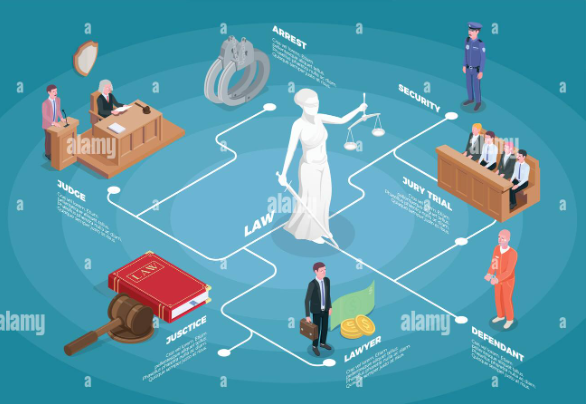Understanding how a bill becomes a law is essential for grasping the intricacies of our government. While it may seem complex, breaking down the process can make it much clearer. The journey from an idea to legislation involves numerous steps and various players—each with their own vital roles.
Imagine navigating this process like following a map. With each step clearly marked, you can see how ideas evolve into laws that shape our society. This blog post will guide you through that journey with engaging visuals and interactive elements designed to enhance your understanding.
Ready to dive in? Let’s explore the legislative process together!
The Role of Committees in the Lawmaking Process
Committees serve as the backbone of the legislative process. They are essential for analyzing proposed laws in depth. Without these small groups, lawmakers would be overwhelmed.
Each committee focuses on specific areas such as finance, education, or health care. This specialization allows members to become experts in their fields. They sift through bills and hold hearings to gather information from various stakeholders.
During this stage, committees can amend legislation before it reaches the floor for a vote. This is where important changes often take place, shaping how a bill will impact society.
Moreover, committees prioritize which bills deserve attention based on urgency and relevance. Their recommendations guide legislators in making informed decisions about what should proceed to debate and voting stages.
Through this meticulous process, committees enhance accountability and transparency within government operations.
Step-by-Step Guide: How a Bill Becomes a Law
The journey of a bill transforming into law is intricate yet fascinating. It all begins when a legislator introduces the proposal. This initial step sets the stage for what lies ahead.
Next, the bill is assigned to a committee. Here, it undergoes thorough examination, debate, and amendment. Committees play a crucial role in shaping legislation before it reaches broader approval.
Once approved by the committee, the bill heads to the floor for discussion among all members of Congress. Voting comes next often requiring multiple rounds as amendments may arise during debates.
If both chambers pass differing versions of the bill, they must reconcile these discrepancies through negotiations or conference committees.
After achieving consensus on its final form, the president reviews it and decides whether to sign it into law or veto it. Each phase builds upon the last in this democratic process.
Sample Flowchart of the Legislative Process
Visual aids can simplify complex processes. A flowchart serves as an excellent tool for understanding how a bill becomes a law.
Imagine starting with an idea. That concept transforms into a proposed bill, which then has to be introduced in either the House or Senate. The journey is just beginning.
Next, the bill enters committee review. This stage involves debates and amendments before it moves forward. If approved, it heads to the floor for voting.
If it passes one chamber, it repeats this process in the other chamber. Should both chambers agree on the final version, it’s sent to the President for approval.
A flowchart provides clarity at every step of this legislative maze. It visually represents each phase and decision point, making learning engaging and straightforward. Using diagrams like these can enhance comprehension significantly.
Key Terms and Definitions
Understanding the legislative process involves familiarizing yourself with key terms. These definitions lay the foundation for grasping how laws are made.
A “bill” is a proposed law that can be introduced in either chamber of Congress. This is where the journey begins.
The term “committee” refers to smaller groups within Congress tasked with reviewing bills. They play a critical role in shaping legislation, deciding which proposals move forward or fall by the wayside.
Another important term is “markup,” which describes the process where committees revise and amend a bill before sending it to the floor for debate.
Finally, “conference committee” comes into play when both chambers pass different versions of a bill. This group reconciles those differences to create a unified text ready for final approval. Understanding these terms will enhance your knowledge as you navigate through how a bill becomes a law flowchart worksheet.
Interactive Worksheet: Create Your Own Flowchart of a Bill Becoming a Law
Creating your own flowchart of a bill becoming a law can be both fun and educational. This interactive worksheet allows you to visualize the legislative process step-by-step.
Start by outlining each stage, from the introduction of the bill to its final approval. Use boxes for each key event and arrows to show how they connect. This visual representation helps clarify what might seem like a complex journey.
Incorporate colors or symbols that resonate with you. This personal touch makes learning more engaging. You could even include examples of real bills that have made headlines recently.
Once completed, share your flowchart with classmates or family members. Discussing it can deepen your understanding of how legislation truly works in our government system.
Conclusion
Understanding the legislative process is essential for anyone interested in how laws are created. The journey from an idea to a law involves several key steps and players. Committees play a vital role, ensuring that bills undergo thorough examination before they reach the floor for debate.
A clear step-by-step guide shows just how intricate this process can be. By visualizing it through a flowchart, you gain deeper insight into each phase of lawmaking. Familiarity with key terms enhances your comprehension and equips you with the language of legislation.
Creating your own flowchart worksheet empowers you further. It allows you to engage actively with the material, reinforcing what you’ve learned about how a bill becomes a law.
The path from concept to regulation is complex yet fascinating. Now that you’re equipped with knowledge and tools like the flowchart worksheet, you’re better prepared to navigate this significant aspect of governance.

